The Hawker Hurricane Mk.I, one of the fighters featured in the WW2 Wings of Glory Squadron Packs, was very much a “transitional” design between the past and the future. It was Britain’s first low-wing monoplane fighter, but originally made with a boxy construction and doped linen covering that was not that different from early Sopwith biplanes. Metal covered (and much lighter constructed) wings first appeared in April 1939 but there were still a few fabric wing fighters in use when the Battle of Britain began (they were changed over as time, or damage, permitted.)
We should remind ourselves that part of the reason for Prime Minister Chamberlain’s “appeasement” at Munich was because the woeful state of British armed forces. At the time of that conference, only two squadrons of Hurricanes were operational and the rest of the RAF would have been using biplanes if a war had begun.
The first production aircraft entered service in October, 1937, and nearly 500 were in use by the time the war began. Ten Hurricane squadrons provided the entire RAF fighter effort in the Battle of France and they took heavy losses. After just one week’s fighting, only two squadrons were fully operational. Better engines, propellers, and aviation fuel would see Hurricanes improve significantly in performance by the time of the Battle of Britain, and Hurricanes would account for 55% of all German losses.
While the Spitfire and Me109 were faster and flashier, the Hurricane could turn with either of them in a dogfight. The Hurricane’s elderly construction had some advantages. Cannon shells and bullets did far less damage to the Hurricane than to the Spitfire’s stressed skin structure and damage was also easier to repair. The plane’s ease of maintenance, wide-set landing gear and easy flying characteristics kept the Hurricane popular in difficult theaters and extended its overall value.
Later, the Hurricane would perform excellent service in North Africa and the Med, protecting Malta, performing night fighter duties, and becoming an excellent ground attack plane. Normally armed with 8 machine guns, a version with 4x20mm cannon proved devastating against ground targets.
The Hurricane was also the first fighter sent to the USSR for Lend-Lease and the most numerous, with almost 3000 planes travelling to the east. The plane saw extensive service in the Pacific, both in ground and carrier-born versions. Overall, over 14,000 Hurricanes and Sea Hurricanes were produced by the end of the war, and 12 remain airworthy today.
Hawker Hurricane Mk.I in Wings of Glory
The Wings of Glory Squadron Pack presents a Hawker Hurricane Mk.I used by the 303 Polish Squadron, “Kos´ciuszko”, the most successful of the 16 Polish fighter squadrons which served with the RAF, both in terms of number of victories scored and in the “ratio” of their own losses compared to victories. In fact, this comparison is not just with the other Polish squadrons but with ALL British squadrons during the Battle of Britain. And, 303 achieved its remarkable numbers, even though it did not become operational until the last day of August, 1940.
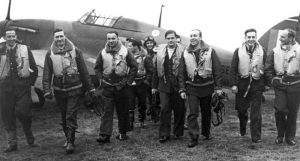
A group of pilots of 303 Squadron in front of a Hurricane Mk.I: Feric (left), Kent, Grzeszczak, Radomski, Zumbach, Lokuciewski, Mierzwa, Henneberg, Rogowski and Szaposznikow.
The squadron was re-equipped with Spitfires in January, 1941, and served honorably throughout the rest of the war, finally disbanding in December of 1946.
The Hawker Hurricane in Wings of Glory comes with three special cards. The first card introduces the optional rule “Spluttering Engines,” restricting how this plane can do overdives – an overdive can be started only if the airplane was flying straight before diving. However, thanks to an experienced Hurricane pilot, you can compensate this limitation with the “Reverse Diver” skill, allowing the pilot to use any low-speed card before the overdive (representing the airplane starting the overdive upside down). The third card presents an ace skill, “Itchy Trigger Finger,” allowing your pilot to shoot faster than everybody else (when you fire, all the damage you cause is resolved before the simultaneous fire of airplanes that do not have an ace with this skill).
The Squadron Pack includes decals to custom the aircraft in five different versions, for Hurricanes piloted by Sergent Antoni Siudak, Pilot Officer Mirosław Feric, Sergeant Josef František, and Flight Lieutenants Jan Eugeniusz Ludwig Zumbach and John Alexander Kent.
Sgt Antoni Suidak served in the Polish 112 fighter squadron, then escaped to France and served in several squadrons there. His first RAF post was Squadron 302 and he only served with 303 for about two weeks, before he was killed Oct. 6, 1940, when a single Ju-88 slipped through defenses and bombed Northolt airfield while he was taxiing for take-off.
Sgt Josef Frantisek is a remarkable story. First, he was Czech, not Polish, but escaped to Poland when the Nazis occupied the remainder of Czechoslavakia in March, 1939. He was intending on going to France but was offered a chance to fight as an “honorary Pole” and then escaped to France with other pilots after Poland’s fall. He may have scored 10 or 11 kills with the French but these stories cannot be confirmed (by one account, he changed his name to protect his family). Moving to the UK and joining 303, he became the unit’s leading scorer (17 +1 “probable”) during the battle. Known as a real discipline problem and “lone wolf,” he ended up being granted “squadron guest” status in 303 so that they did not have to account for his antics. His death on October 8, 1940 is a mystery, crashing during a scouting mission, possibly due to fatigue or due to a flying error in a maneuver whilst showing off to his girlfriend – or perhaps a combination of these two.
The pilot officer Miroslaw Feric was born in what is now Bosnia, and grew up in Poland, serving in the 111 Polish squadron during the Nazi invasion. Like many other Polish pilots, he escaped to Romania, was “interned” by the still-neutral nation, and escaped to France. He scored 7 kills during the Battle of Britain and a total of 9 in his career, which ended in July, 1942 in a crash while doing aerobatics in a new Spitfire.
Flt Lft Jan Eugeniusz Ludwif Zumbach was a Swiss citizen (by his father) but grew up on the estate of his Polish mother and joined the army in 1936. Transferred to fighters in 1938, he was in 111 Squadron but missed the German invasion due to a broken leg. Escaping to France serving there, he became one of the founding members of 303 Squadron.
He scored 8 kills during the Battle of Britain and eventually became the 303 Squadron commander in May 1942 and commander of the 2nd Polish Air Wing. In January 1945, he made a navigation error and landed in German territory, spending the last months of the war as a POW. His postwar life was extraordinary, part of which is detailed in his autobiography, "On Wings of War: My Life as a Pilot Adventurer".
One story illustrates the situation of the Polish pilots in the U.K. Most of them hardly spoke a word of English (there was some communication with British officers in French) and were not used to “miles” and “feet” as measurements, nor British radio practices or fighter training. In fact, the RAF came up with a novel way to teach the 'newcomers' British tactics. Pilots of Nos. 302 and 303 Squadrons were ordered to ride tricycles - all equipped with radio, speed indicators and compasses - around airfields in flying formations. The Poles, combat experienced and eager to fight, did not take to that kind of approach very lightly. Pilot Officer Jan Zumbach wrote in his memoirs: “The British wasting so much of our time with their childish exercises, when all of us had already won their wings.”
Flt Lft John Alexander Kent was born in Winnepeg, Canada, in 1914 and began to love flying early, becoming the youngest licensed pilot in Canada at age 17. In 1933, he considered taking a mercenary job flying for the Chinese in Mongolia but declined when he learned A—He would forfeit his Canadian citizenship to do so, and B—they were flying surplus Sopwith Camels! He applied for an RAF commission and began flying with them in 1935, displaying such outstanding flying skills that he was transferred to the Experimental Section as a test pilot. He began the war as a photo recon pilot, and was shifted to fighters after the Fall of France, where he ended up being named to command the newly formed 303 Squadron. Initially unhappy at being posted to a ‘foreign’ squadron which — like many English — he assumed had little flying skills, Kent reversed his opinion when he saw how well they could fly and worked so hard to learn Polish and provide them with equal equipment that the unit nicknamed him “Kentowski.” Finally made operational (after shooting down a German plane during a training mission), 303 would end up with 126 kills during the Battle of Britain while losing only 8 pilots – the best record of any squadron.
Kent was moved to command (and revitalize) the worn-out 92 Squadron in October, 1940, and then later commanded the Polish Wing of four squadrons. In February, 1941, he was awarded the Virtuti Militari — Poland’s highest military decoration. He also won the DFC. Surviving the war with 13 kills, he was part of the occupation force and then returned to test pilot duties, not leaving the RAF until 1956.
Speaking of his time with the Poles he said -- "I cannot say how proud I am to have been privileged to help form and lead No. 303 squadron and later to lead such a magnificent fighting force as the Polish Wing. There formed within me in those days an admiration, respect and genuine affection for these really remarkable men which I have never lost. I formed friendships that are as firm as they were those twenty-five years ago, and this I find most gratifying. We who were privileged to fly and fight with them will never forget and Britain must never forget how much she owes to the loyalty indomitable spirit and sacrifice of those Polish fliers. They were our staunchest Allies in our darkest days; may they always be remembered as such!"
Information sources: "Polish squadron in the years 1918-1939", Jerzy Pawlak; "On Wings of War: My Life as a Pilot Adventurer", Jan Zumbach (London: Corgi, 1977); "One of the Few: A Triumphant Story of Combat in the Battle of Britain", Johnny Kent (History Press Limited, 2008); The Battle of Britain London Monument; Imperium War Museun; Polish Squadrons Remembered; Battle of Britain profile of courage: John Alexander Kent and the RAF’s Polish fighter pilots; Aircrew Remembered; .

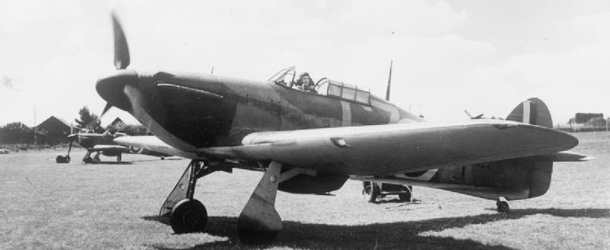
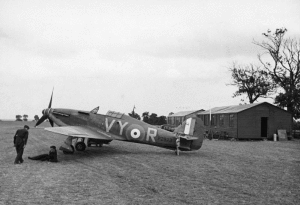
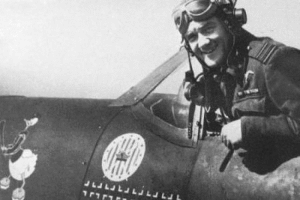
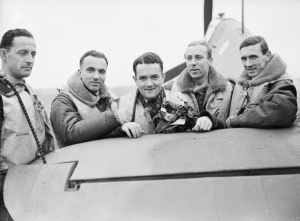


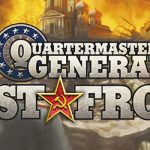





Follow Us on